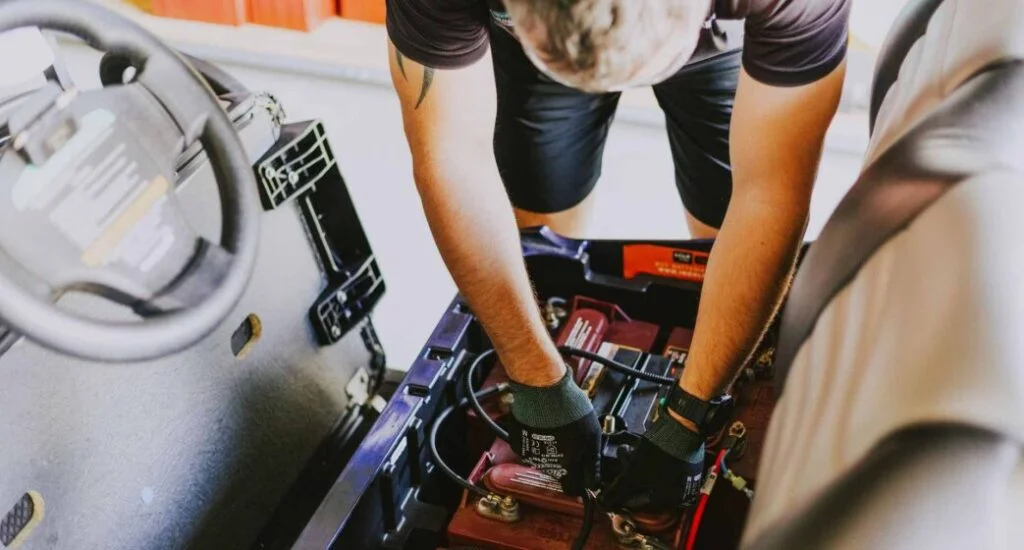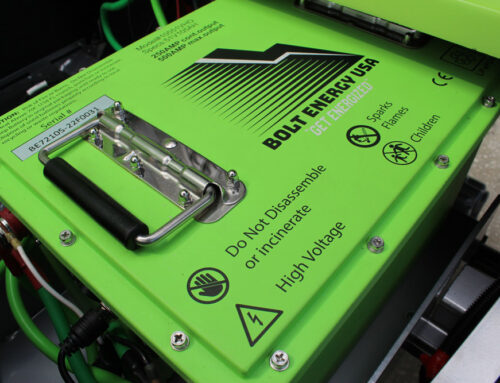Golf carts are more than just vehicles for getting around the golf course; they are also widely used in residential communities, resorts, and commercial facilities. Whether you own a gas-powered or electric golf cart, proper maintenance is crucial to keeping it in top shape and ensuring reliable performance. Regular care not only extends the life of your cart but also prevents costly repairs and enhances safety. This article will guide you through essential golf cart maintenance tasks that every owner should know.
1. Battery Maintenance (For Electric Carts)
Electric golf carts rely on batteries to power their motors, making battery care one of the most critical aspects of maintenance. Most electric carts use lead-acid batteries, though some newer models may use lithium-ion batteries.
Key Maintenance Steps:
• Check Water Levels: For lead-acid batteries, regularly check and maintain the electrolyte (water) level. Use distilled water and fill cells to the recommended level. Check the water levels at least once a month, especially after heavy use.
• Keep Batteries Charged: To extend battery life, keep your golf cart batteries charged. Avoid letting them fully discharge, as this can damage the cells. It’s a good practice to charge the batteries after each use.
• Clean Battery Terminals: Corrosion on battery terminals can impede electrical connections. Periodically clean the terminals using a solution of baking soda and water, then apply a protective spray to prevent future corrosion.
• Inspect for Damage: Regularly inspect the batteries for cracks, leaks, or bulges. If any damage is visible, replace the affected battery immediately to avoid hazardous situations.
2. Engine and Fuel System Maintenance (For Gas-Powered Carts)
Gas-powered golf carts, while requiring different maintenance from electric carts, also need regular attention, particularly in terms of their engine and fuel system.
Key Maintenance Steps:
• Change the Oil: Just like a car, a gas-powered golf cart needs regular oil changes. Check the oil level frequently and change the oil every 125-150 hours of operation, or at least once a year. Be sure to use the recommended oil grade as specified by the manufacturer.
• Check the Air Filter: A clogged or dirty air filter can affect your cart’s performance and fuel efficiency. Inspect the air filter regularly and replace it every six months or after 300 hours of use, or sooner if it appears dirty.
• Inspect Fuel Lines and Filters: Over time, fuel lines can become cracked, and fuel filters can clog. Regularly inspect the fuel lines for wear and tear, and replace the fuel filter as recommended by the manufacturer.
• Spark Plug Maintenance: Spark plugs should be checked for corrosion or fouling and replaced if necessary. Clean spark plugs at least once a year to ensure smooth engine performance.
3. Tire Maintenance
Proper tire care is essential for safety and performance. Regularly checking your golf cart’s tires can help prevent flats, improve fuel efficiency, and ensure a smooth ride.
Key Maintenance Steps:
• Check Tire Pressure: Low tire pressure can affect the handling of the cart and cause premature tire wear. Use a pressure gauge to check the tire pressure and inflate them to the manufacturer’s recommended level. Ideally, you should check tire pressure at least once a month.
• Inspect for Wear and Damage: Look for signs of uneven wear, cracks, or punctures in the tires. Rotate the tires occasionally to promote even wear, and replace tires that show signs of excessive wear or damage.
• Maintain Wheel Alignment: Misaligned wheels can lead to uneven tire wear and poor handling. If your cart tends to pull to one side or you notice uneven tire wear, have the alignment checked and adjusted as needed.
4. Brake System Maintenance
A well-functioning brake system is essential for the safety of your golf cart. Regularly inspecting and maintaining the brakes can prevent accidents and ensure a smooth stopping performance.
Key Maintenance Steps:
• Check Brake Pads: Brake pads wear down over time, and worn pads can damage the brake rotors or drums. Inspect the brake pads regularly and replace them when they become thin or worn out.
• Adjust the Brakes: Over time, the brake cables may stretch, leading to reduced braking efficiency. If you notice that your cart’s braking distance has increased, it may be time to adjust the brakes. Consult the owner’s manual for instructions on how to do this or take it to a professional mechanic.
• Inspect Brake Cables and Connections: Periodically check the brake cables for signs of wear or fraying. Ensure all connections are tight and that the brakes engage smoothly.
5. Chassis and Suspension Maintenance
The chassis and suspension of your golf cart play a critical role in providing a comfortable and stable ride. Over time, the components of these systems can wear out or become loose.
Key Maintenance Steps:
• Inspect the Suspension: Look for signs of wear on the suspension components, such as the shock absorbers, springs, and bushings. If you notice excessive bouncing or a rough ride, it may be time to replace the shocks or adjust the suspension.
• Lubricate Moving Parts: Grease and lubricate any moving parts of the suspension, steering, and wheel bearings as recommended in the owner’s manual. This reduces friction and prevents wear on the joints, keeping the cart operating smoothly.
• Check for Loose Bolts and Nuts: Regularly inspect the frame and undercarriage for loose bolts, nuts, or fasteners. Tighten any that appear loose to ensure the structural integrity of the cart.
6. Body and Electrical System Maintenance
Maintaining the body and electrical system of your golf cart ensures both functionality and aesthetics.
Key Maintenance Steps:
• Clean the Cart: Regularly wash the exterior of your cart to remove dirt, mud, and other debris that can accumulate. Avoid using high-pressure washers around sensitive electrical components to prevent water damage.
• Inspect Lights and Signals: If your cart is street legal or used at night, ensure that all lights (headlights, taillights, turn signals) are functioning properly. Replace any burnt-out bulbs or faulty connections.
• Check the Horn and Safety Features: For carts that are used on public roads, check that the horn, mirrors, and other safety features are functioning as required by law. Ensure that seat belts (if applicable) are in good condition and properly attached.
• Maintain the Windshield: If your cart has a windshield, clean it regularly to maintain visibility. Check for cracks or scratches and replace the windshield if it becomes damaged.
7. Seasonal and Long-Term Storage
If you don’t use your golf cart year-round, it’s important to prepare it for storage to avoid damage during periods of inactivity.
Key Maintenance Steps:
• Charge the Battery: Fully charge the batteries before storing the cart. For electric carts, disconnect the battery or use a battery maintainer to prevent discharge during long-term storage.
• Store in a Dry, Covered Area: Keep the golf cart in a dry, covered area to protect it from the elements. If you don’t have a garage, consider using a weather-resistant cover to shield the cart from rain, sun, and dust.
• Elevate the Tires: If storing the cart for a long period, consider elevating it on jacks to prevent flat spots on the tires. Alternatively, periodically move the cart to redistribute weight on the tires.
Conclusion
Regular maintenance is key to keeping your golf cart running efficiently and prolonging its lifespan. Whether you own an electric or gas-powered cart, routine checks and care will save you time, money, and headaches in the long run. By following the essential maintenance tips outlined above, you can enjoy a smooth, reliable, and safe ride for years to come.



